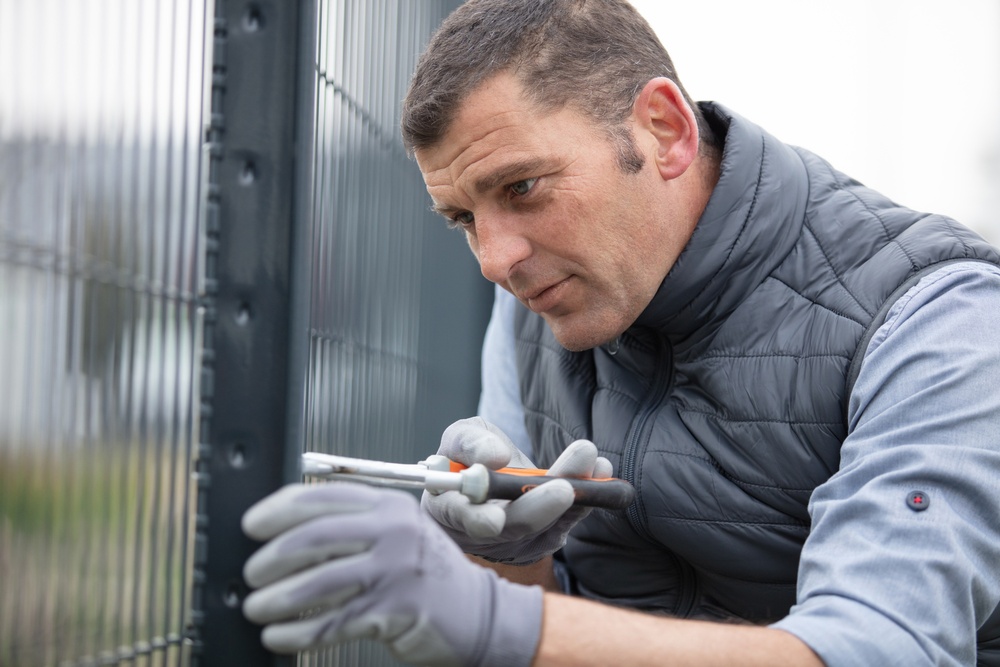A fence offers a variety of benefits for homeowners. It acts as a security barrier, deterring potential intruders and ensuring the safety of children and pets. Additionally, it clearly distinguishes property boundaries, preventing disputes with neighbours.
A well-constructed fence also boosts your home's aesthetics, making it a significant investment. While the design and construction of a fence can be straightforward, proper installation requires careful preparation.
Preparation Steps For Fence Installation
Before proceeding with a fence installation, a thorough preparation is vital. Initially, the decision should be made whether to undertake the project DIY or employ professional help. While an array of online tutorials might suggest DIY fence installation is manageable, it's important to consider factors such as job complexity, your chosen material's characteristics, and the condition of your terrain.
The nature of the terrain can influence the decision: rocky, compacted, or sloping grounds are often better tackled by professionals with specialized equipment. Firms like Pride Fencescapes are experienced in handling such tasks and can ensure the job is done right the first time.
It's also important to check local and Homeowners Association (HOA) regulations, as they can impact fence design, height, spacing, or placement. At times, these regulations may require you to obtain a permit for digging.
Site preparation is also necessary and involves clearing any hardscapes to make room for fence installation. This could include removing any rocks, debris, or old fencing, and leveling the ground as needed to ensure a smooth and even base for your new fence.
Budgeting is also an integral part of the fence installation process. It's not just about tallying the cost of materials or labour; it's about considering the bigger picture. This includes any potential additional tasks like old fence removal or costs associated with changes in project plans.
Whether you're doing a DIY project or considering hiring a professional, it's advisable to generate a comprehensive building quote or conduct a detailed cost analysis. This allows you to plan your budget effectively, set realistic expectations, and safeguard against unexpected expenses.
Choosing The Right Fence For Your Home
The next step is to select the most suitable type of fence, one that meets both your aesthetic preferences and practical needs. Choices range from traditional wood, versatile and often suitable for DIY installations, to durable but more installation-intensive options like metal and chain link. Vinyl and composite fences offer a balance of installation convenience and long-term durability.
The choice should enhance your property's curb appeal while also fulfilling your security and boundary requirements.

Safety Measures
Regardless of whether you opt for DIY or professional fence installation, safety should be paramount. Always wear suitable Personal Protective Equipment (PPE) such as safety glasses, sturdy gloves, and steel-toe boots when handling installation work.
Prior to digging, verify the absence of any underground utilities, as striking a line can be dangerous and may result in fines. Handle heavy materials and power tools responsibly, ensuring fence posts are stable before moving to the next step.
How To Install A Fence
Here are basic steps to follow when installing a fence:
- Measure And Mark The Layout
Start the installation process by measuring the length of the fence and marking the post locations. Stretch your tape measure from one corner along the fence line while recording the measurements until you cover the whole area. You can use a measuring wheel for extensive layouts. Also, measure the distance between the fence posts and use chalk or spray paint to mark the locations. This helps you determine the number of panels and fence posts you'll require.
- Gather Your Materials And Tools
After getting all the measurements, gather the essential fence supplies you'll need for installation. Below are some tools and materials you'll need to build a fence:
- Fence posts
- Fence panels
- Fence rails
- Post hole digger
- Power drill
- Deck screws
- Fasteners
For more guidelines on the supplies to buy, consult a contractor or research online.
- Dig Holes And Set Fence Posts
Dig holes in the marked post locations and ensure they're deep enough to offer enough support. Typically, the depth should be one-third of the height of your fencing material to provide more stability. Also, all post holes must be of the same depth and width to ensure uniformity during installation.
When the holes are ready, pour in about four inches of gravel. Afterwards, add around eight inches of concrete mix on top of the gravel and position your fence posts in the concrete. Afterwards, wait for the concrete to dry. You should read the instructions on your concrete mix to determine how long it takes to dry. Concrete provides extra strength, ensuring a more secure structure that can stand for many years.
- Install Rails To The Posts
Attach the rails to the fence posts using a power drill and deck screws or a hammer and nails. To do this, first mark where the rails will be installed on the fence posts. Afterwards, attach brackets to the posts to hold the rails in place. Lastly, attach the rails to the brackets by tightening the screws.
- Attach Panels Or Pickets To The Rails
At this stage, your fence has started to take shape. So, to complete the job, install panels or pickets to the rails. A panel is the part of the fence that sits between two posts. On the other hand, pickets are individual boards that make up the body of the fence. To install them, mark where they should be on the rails and use screws to secure them to the rails.
Installing a fence on your property is a smart move. It provides security, privacy, and added beauty to your home. Therefore, the above can serve as your guide as you prepare for installation. Most importantly, you'd want to partner with a professional fencing contractor for a faster and more efficient installation.
Publisher Website: https://pridefencescapes.com.au/